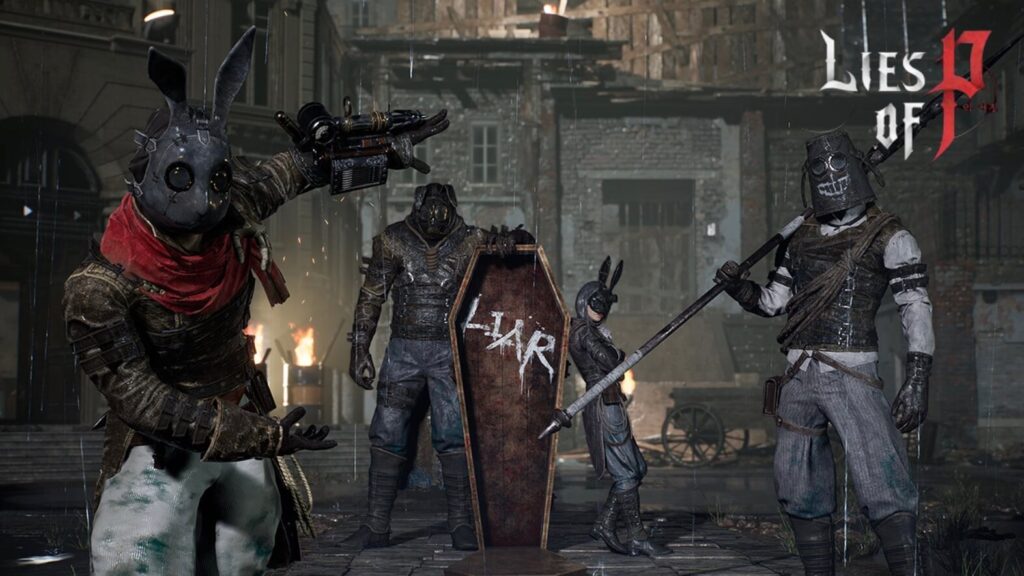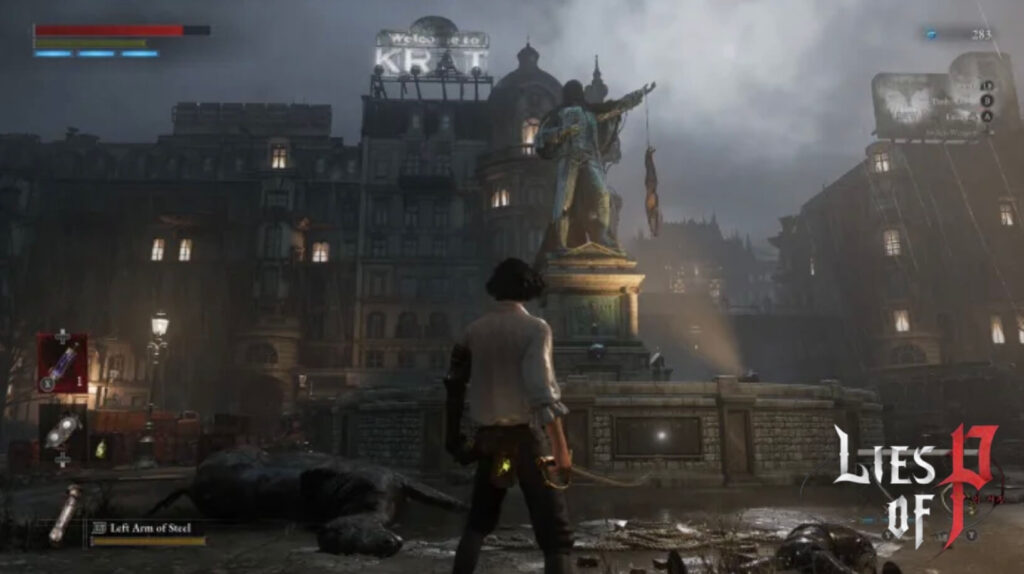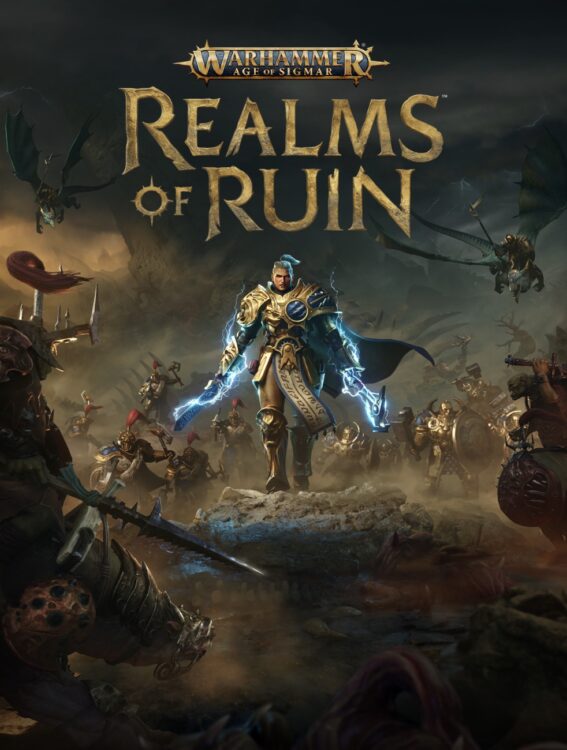Classic novel of Pinocchio. It features Pinocchio as the protagonist, a puppet created by Geppetto and treated with paternal affection. However, this world is plunged into darkness, ravaged by the corruption of the puppets and a disease affecting both humans and wooden creations. The narrative of Lies of P revolves around the breaking of the Great Pact, a set of rules that once governed the relationship between puppets and humans, leading to ethical dilemmas that influence the development of the story.
This dark context is complemented by an immersive soundtrack that adds depth to the player’s experience. The masterfully composed music captures the emotional nuances of each moment, from the palpable tension of confrontations to the melancholy that permeates the scenes of ruin and decay. Orchestral arrangements and atmospheric themes transport the player to an immersive world, enriching the narrative in a way that goes beyond words.

The core of Lies of P lies in its challenging combat system. The fusion of the mechanics of Bloodborne and Sekiro is evident, inheriting the speed and recoverable vitality of one and the parry philosophy of the other. The weapons, each with their own special abilities, expand the strategic spectrum, allowing deep customization of the gameplay style.
The game, however, goes beyond the familiar; it introduces significant innovations. The mechanics of weapons divided into blade and hilt, along with the possibility of modifying the character’s mechanical arm, add layers of strategy and customization, challenging players to adapt and master new skills.
The combat system, a subtle fusion between the tactical aggression of Bloodborne and the technical precision of Sekiro, encourages players to be both offensive and patient. Parrying becomes a crucial tool, allowing the execution of special moves, rewarding mastery and synchronization with enemy patterns.
The level design of Lies of P, while following the Souls pattern of large interconnected areas, shows maturity in its structure. The absence of maps or visual markers pushes the player to explore and memorize the environment, providing subtle clues for navigation, thus elevating the challenge and reward of discovering shortcuts and secrets.


Pros:
- Gameplay Innovation: Lies of P introduces significant variations in the combat system of Soulslikes, amalgamating the best of Bloodborne and Sekiro and adding new mechanics like divided weapons and mechanical arm modifications.
- Engrossing Narrative: The reinterpretation of the story of Pinocchio immerses the player in a dark and decadent world, offering ethical dilemmas that influence the course of the game.
- Immersive Soundtrack: The orchestral music complements the narrative, immersing the player in every moment of the game, from tense confrontations to melancholic scenarios.
- Mature Level Design: Despite following the structure of large interconnected areas, the game dispenses with visual maps, encouraging exploration and memorization of the environment to discover shortcuts and secrets.
Cons:
- Steep Difficulty Curve: The game’s difficulty can be intimidating for some players, especially in boss fights, which could lead to frustration.
- Optional Help System: While the option to summon a specter for assistance in fights is offered, some players might feel that the game is designed assuming this assistance, which can detract from the sense of achievement in overcoming challenges.
- Absence of Visual Orientation Elements: The lack of maps or visual markers can disorient some players, resulting in a more challenging but also more demanding experience.
In summary, a new Souls game with fresh touches like its combat system, which fuses the best of two known worlds while introducing novel elements that challenge and reward experimentation and mastery.











